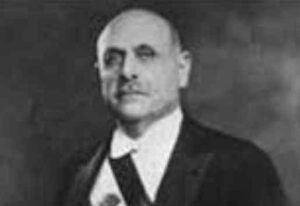Lebanon has had a number of presidents since its establishment as an independent country. This article provides a clear and straightforward look at the presidents who have led Lebanon, arranged in order of their terms.
We’ll also highlight key achievements and challenges faced by some of these leaders, focusing particularly on the first president, the most recent president, and the current political situation.
READ ALSO: Presidents That Have Ruled Israel Till Date
List of Presidents of Lebanon
Here’s a list of Lebanon’s presidents, presented in chronological order along with the years they were in office:
| President | Years in Office |
|---|---|
| Bechara El Khoury | 1943 - 1952 |
| Camille Chamoun | 1952 - 1958 |
| Fuad Chehab | 1958 - 1964 |
| Charles Helou | 1964 - 1970 |
| Suleiman Frangieh | 1970 - 1976 |
| Elias Sarkis | 1976 - 1982 |
| Bachir Gemayel | 1982 (assassinated) |
| Amine Gemayel | 1982 - 1988 |
| René Moawad | 1989 (assassinated) |
| Elias Hrawi | 1989 - 1998 |
| Émile Lahoud | 1998 - 2007 |
| Michel Suleiman | 2008 - 2014 |
| Michel Aoun | 2016 - 2022 |
| Vacant (as of 2023/2024) | No current president |
Bechara El Khoury: Lebanon’s First President

Bechara El Khoury was Lebanon’s first president, holding office from 1943 to 1952. His presidency is significant because he was in charge when Lebanon gained independence from France in 1943. Khoury is remembered for his role in laying the foundation of the newly independent Lebanese state.
Achievements:
- Independence: Khoury played a crucial role in securing Lebanon’s independence from French rule in 1943. He worked closely with Prime Minister Riad Al-Solh to establish the National Pact, which became a key part of Lebanon’s political structure.
- Economic Growth: During his time in office, Lebanon experienced economic growth, particularly in the banking sector, which helped establish the country as a financial center in the Middle East.
Challenges:
- Corruption Allegations: Toward the end of his term, Khoury faced allegations of corruption and favoritism, leading to public dissatisfaction and eventually to his resignation in 1952.
Lebanon is currently operating without a president or an effective government, a situation that has persisted since Michel Aoun’s term ended in October 2022.
The country is facing a significant political crisis characterized by a deadlock in the parliamentary election process for a new president. Despite multiple sessions, no candidate has secured the necessary votes due to deep political divisions and the withdrawal of key factions like Hezbollah from the voting process, which has prevented a quorum needed for elections.
READ ALSO: Presidents That Have Ruled Azerbaijan Till Date
Current Government Structure
Lebanon is functioning under a caretaker government, which has limited authority and is unable to implement substantial reforms or make critical decisions.
This caretaker government was formed during Aoun’s presidency but lacks the full powers typically granted to an active government. The absence of a president means that many executive functions, such as signing bills into law and appointing ministers, are stalled.
The political vacuum is exacerbating Lebanon’s ongoing economic crisis, which has seen the currency lose over 95% of its value and a significant portion of the population plunged into poverty.
The economic collapse, coupled with political instability, has made it increasingly difficult for the caretaker government to address urgent financial needs or negotiate with international bodies like the IMF for aid
Conclusion
Lebanon’s history is closely tied to the leadership of its presidents, each of whom has had a significant impact on the country’s direction. From Bechara El Khoury, who led Lebanon to independence, to Michel Aoun, who faced unprecedented challenges, the role of the president remains crucial. As Lebanon continues to navigate its complex political landscape, the hope for a stable and prosperous future remains, despite the current challenges.
